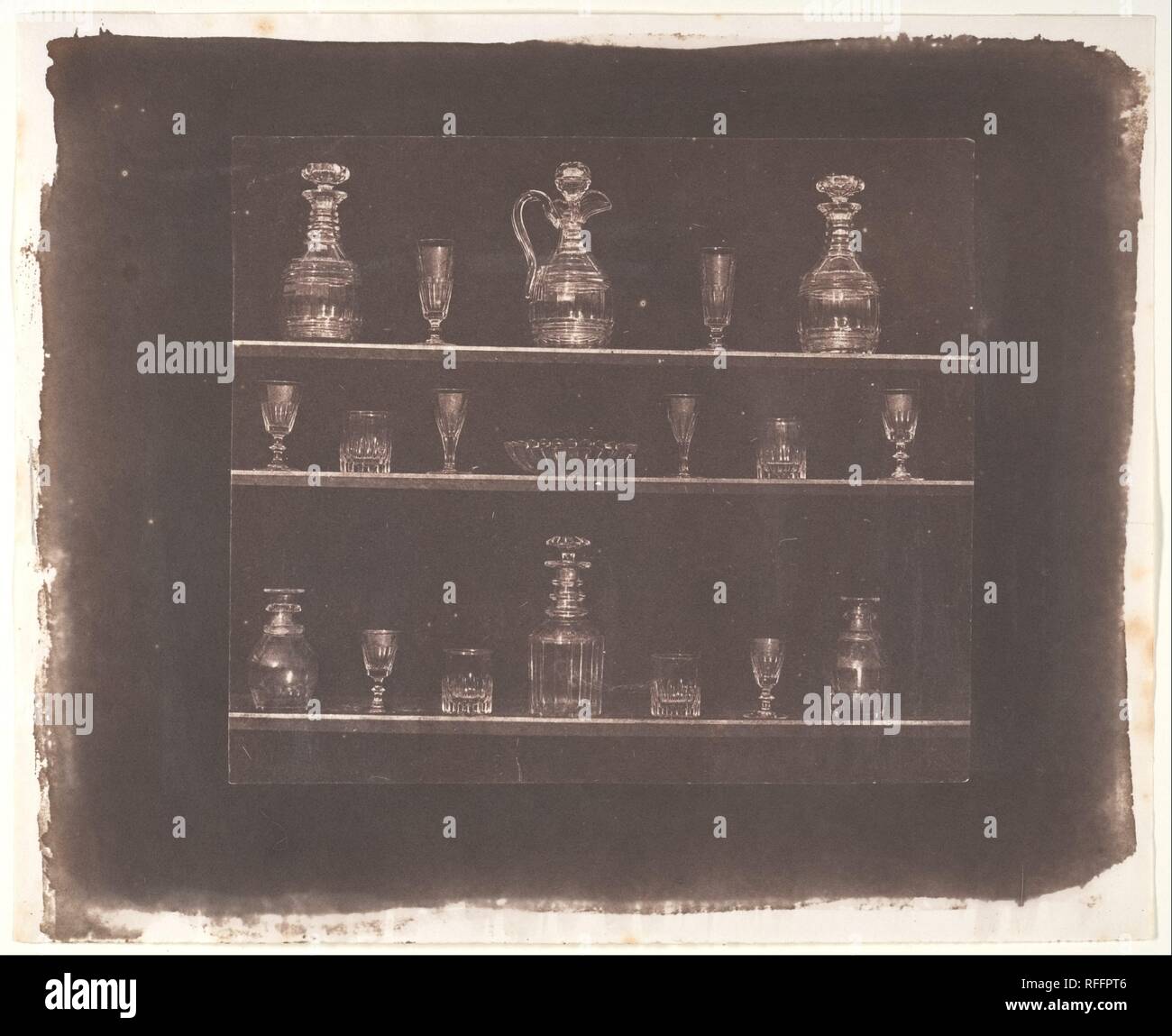Articles of Glass. Artist: William Henry Fox Talbot (British, Dorset 1800-1877 Lacock). Dimensions: 13.2 x 15.1 cm. (5 3/16 x 5 15/16 in.). Date: before June 1844. Still-life painters frequently included cut crystal or glassware in their elaborate fruit or flower compositions (53.111), in part as a demonstration of virtuoso technique-to paint a transparent object, visible only as reflected and refracted light, presents a special challenge and, if successful, brings particular delight to the viewer. Talbot, in plate 4 of The Pencil of Nature seems to say, "Look at what the new medium of ph

Image details
Contributor:
Album / Alamy Stock PhotoImage ID:
RFFPT6File size:
36.2 MB (1,022.2 KB Compressed download)Releases:
Model - no | Property - noDo I need a release?Dimensions:
3942 x 3214 px | 33.4 x 27.2 cm | 13.1 x 10.7 inches | 300dpiPhotographer:
AlbumMore information:
This image could have imperfections as it’s either historical or reportage.
Articles of Glass. Artist: William Henry Fox Talbot (British, Dorset 1800-1877 Lacock). Dimensions: 13.2 x 15.1 cm. (5 3/16 x 5 15/16 in.). Date: before June 1844. Still-life painters frequently included cut crystal or glassware in their elaborate fruit or flower compositions (53.111), in part as a demonstration of virtuoso technique-to paint a transparent object, visible only as reflected and refracted light, presents a special challenge and, if successful, brings particular delight to the viewer. Talbot, in plate 4 of The Pencil of Nature seems to say, "Look at what the new medium of photography can give you-not just one crystal goblet, but shelves full of glass, as effortlessly as it records any other subject." In the preceding plate, Articles of China, Talbot also speculated on a new use of photography: "the whole cabinet of a Virtuoso and collector of old China might be depicted on paper in little more time than it would take him to make a written inventory." Even more prophetically, he speculated that "should a thief afterwards purloin the treasures-if the mute testimony of the picture were to be produced against him in court-it would certainly be evidence of a novel kind; but what the judge and jury might say to it, is a matter which I leave to the speculation of those who possess legal acumen.". Museum: Metropolitan Museum of Art, New York, USA.